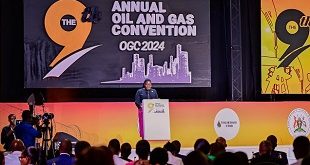
By Agnes E. Nantaba
Chris Nunget is the Managing Director of Sadolin Paints Uganda Ltd. He spoke to Agnes E. Nantaba about the company’s growth prospects and overview of the real estate industry in Uganda.
What are the key elements of your management style as a manager?
It is very important as a manager to look at opportunities rather than problems. Uganda, being a growing economy, presents many opportunities. A good manager should remain positive to achieve better results.
I have worked as the managing director of Sadolin Paints for over 25 years. I picked the company in a dormant state. At the time, the business was smaller and required my direct involvement. But as the business grew, I was required to delegate and let other people do the work. I have to rely on staff members to achieve success.
By then we didn’t have a position in the market and the company had a very limited capacity. We now have 50% share of the paint market in the country and are the obvious brand leader with a reputation built on quality. Together with the team, we set standards for ourselves, meet them and then surpass them, which makes Sadolin a company that believes in continuous improvement.
What is your assessment of the performance of the manufacturing industry in Uganda?
The industry is still limited because there hasn’t been a great deal of new investments in manufacturing but there are some standard companies that have taken advantage of the market and re-invested for expansion.
So, while the industry has not grown as it may have, there are some manufacturing plants that have tremendously expanded from one line to several – a sign that things are getting better.
Uganda, considering the population growth, has a huge demand for domestic housing. Real estate and construction tend to bend more towards the operand rather than the industry.
With the GDP growth standing at 6%, people have some money to invest in property, which has proved to be a very good investment considering its valuation against other factors. The construction sector is growing at 20% per year, which makes it a promising sector better than even agriculture.
How do you ensure that the Sadolin brand remains strong?
The key elements have been concentrating on quality and value for money through giving the market what it deserves. If you manage to do that, then you go to the stage of sustainability, which we are currently managing. We are the only independent company in Uganda that has international access and certification. We have access to market trends in Europe about the latest shades or colours, which we positively embrace to remain competitive in the market.
What are some of the challenges the manufacturing industry is facing in Uganda?
The obvious ones used to be power and skills although these have improved. However currency instability has had a negative impact.
What interventions can be undertaken to spur growth of the manufacturing sector in Uganda?
The fact is that there are not many companies coming in. It’s the existing companies that try to re-invest. The Uganda Investment Authority is not moving quickly to facilitate business development in the country. It’s an area that should be looked into.
It’s the role of government to provide a stable working and investment environment for the growth of the sector. It is already currently implementing both long-term and short-term solutions like construction of more power dams and building the road network among others that will mitigate the impact of the challenges faced by the industry thereby triggering growth in the sector.
A continuous performance improvement agenda has to be upheld in order to reduce the performance gap between the construction industry and other sectors of the economy.
You recently introduced external vanishes and fillers as well as dust repellant paints. How have they performed in the market?
These are basically niche-based products, which have been accepted by the target clients. For instance Kampala is a dusty area so the dust repellant paint allow for the dust to be easily washed off making it relevant in the market.
What is your strategy for the next few years?
The first thing we realized a couple of years ago is that we had capacity constraints at a time we were still located in Kampala industrial area and the space was limited in relation to the growth of the business. So we constructed a new factory in Namanve where we invested $10 million. This has effectively doubled the production capacity. Competition is there but we say that it is healthy for the growth of the economy.
What is your projection of the real estate industry in Uganda in the next few years?
It is expected to keep on growing given that 50% of the population is under 20 years, which makes it even better for both the manufacturing and real estate industry in Uganda. There is a huge demand for housing. If we define real estate as more attached to the middle class, it means more demand.
 The Independent Uganda: You get the Truth we Pay the Price
The Independent Uganda: You get the Truth we Pay the Price


